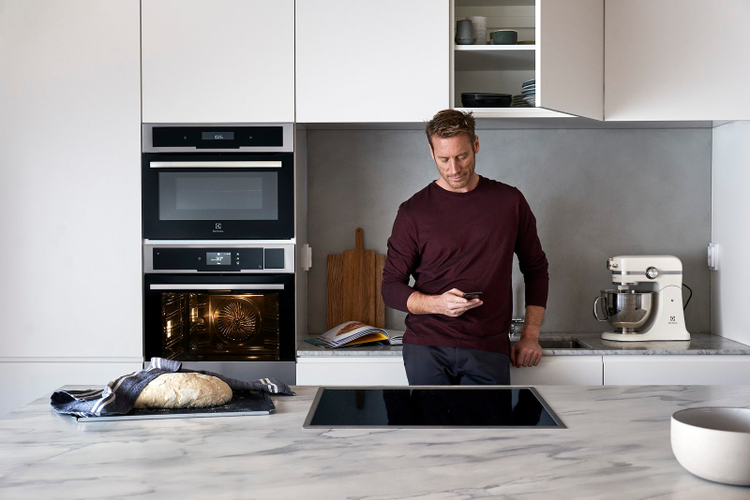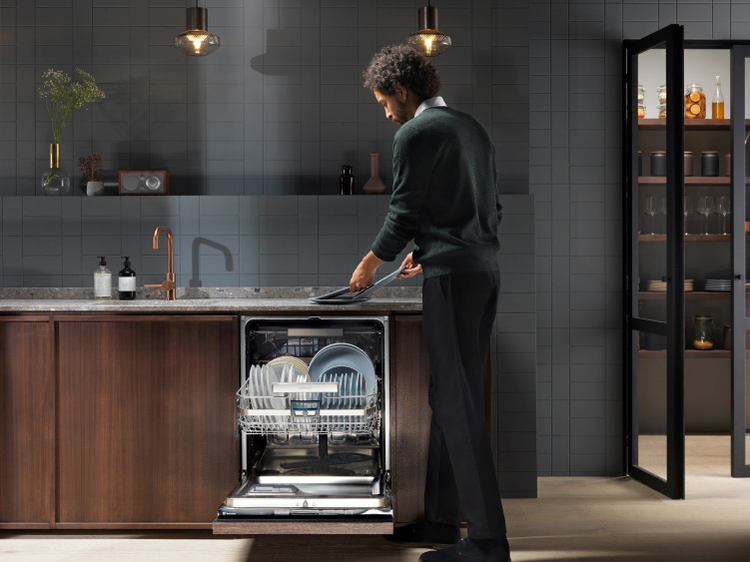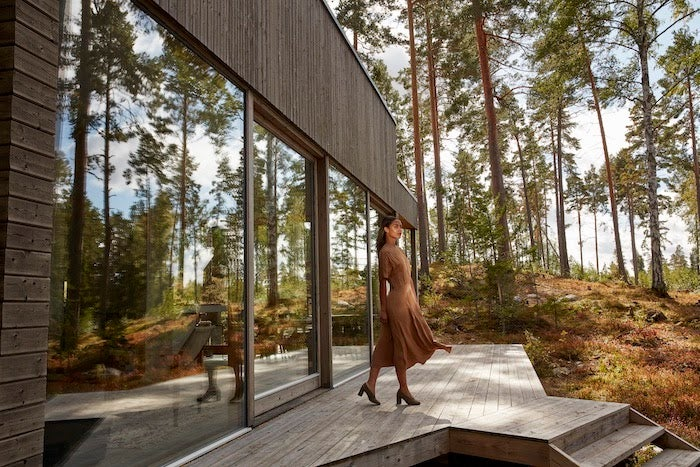How Electrolux is using UX design practices to make appliances more sustainable

All images courtesy of Electrolux.
Just a few weeks ago, we marked Earth Overshoot Day. If you don’t know what that is, it’s the point in the year where we, as humans, begin consuming more resources than the earth can regenerate on its own. It’s the point in the year that we start going into debt, living off a sort of ecological credit card with compounding interest.
I’ve been very inspired by the incredible Greta Thunberg, who lives in Stockholm where I’m based. I am amazed at how this one young individual has been able to motivate such a big call to action. If I think about the things that are meaningful for me in my work, environmental sustainability is at the top of the list. At Electrolux, I lead a team of designers based all over the world and this is one of the top priorities for our team — fully supported by the business at large.
At many well-established companies, outside of high tech, design has evolved. Whereas we once played the role of form giver (focused only on aesthetics), designers at companies like Electrolux are now seen as having an integrative function to solve problems and find innovative solutions.

Electrolux is predominantly an appliance company. As a digital design team, inside of a company that makes physical goods, we use user research along with a scientific understanding of our products to discover and design digital solutions. In my talk at Adobe MAX, I will share a bit of how we’ve been able to do this, and how we’ve used tools such as Adobe XD to do it, all the while advancing our sustainability goals as a future-focused company.
Prioritizing a point-of-view inside the design team to advance a brand and “do good”
At Electrolux, my role is two-fold. I am responsible for making the biggest impact possible on our product portfolio with software. Like pretty much all the other appliance manufacturers, we are heavily rooted in the industrial system. When it comes to software and connectivity, these are entirely new sorts of design materials for us to work with. I focus on creating processes and tools for measuring the performance of our software products and developing the team alongside it.
The other part of my job at Electrolux is to provide a point of view about where we’re headed. We look at how you can make a dramatic impact when you add connectivity and a little bit of intelligence to appliances. When you light these appliances up with cloud computing, you discover totally new ways that they can have an impact, especially when it comes to sustainability.
A dishwasher that matches user behavior to conserve energy and water
Fortunately, I’m able to point to several great examples where we, as a design team, have been able to make a tangible impact on the sustainability of our products. They are proof points that sustainable design works, with the right processes in place.
When you think of your dishwasher at home, what metric do you use to gauge its effectiveness? No doubt you want your dishes as clean as possible, as fast as possible. Why wouldn’t you? This is where user research really comes in handy: we discovered that many families load their dishwasher throughout the day, and run it at night. When looking for the most environmentally friendly way of doing dishes, we also know that doing dishes on the quickest setting uses the most energy and water.

In the end, the user doesn’t actually need their dishes done as quickly as possible, even though that seems like a natural user need. So, we built the QuickSelect Eco-Indicator, which is a user interface that prioritizes the most environmentally friendly way of doing dishes. It takes about three hours (still fast enough so your dishes will be done by the time you wake up), and saves a tremendous amount of water and energy in the process. The great thing is this actually creates a positive user experience in the process – your electricity bill (and water bill) will be lower in the end.
A new way to vacuum
Another great impact we’ve made, as a design team, is rethinking the purchasing model of appliances altogether. The classic industrial model is to take raw materials, create a product, put it in store, and sell it to someone, who now owns that product. However, with our i9 robotic vacuum cleaner, we have now instituted a pay-per-use model in Sweden.

If you subscribe to this model, we’ll send you either a new or newly refurbished robotic vacuum cleaner to your home, and each month you’ll be charged on how many square meters of your apartment the robot cleaned. This really works out for the user, in the end – robot vacuums are expensive and with this model you end up paying nothing out of pocket and just pay for what you need. Additionally, we believe it will ultimately keep these in service longer which is a more sustainable approach.
Using Adobe XD to design innovative sustainability solutions and get buy-in with interactive prototypes
One of our biggest achievements as a design team at Electrolux has been bringing a systemized way of thinking to the organization. Adobe Creative Cloud has helped us do this considerably. We migrated to Adobe XD about two years ago and use it as a core part of our internal design system – our sort-of Lego kit for connected product experiences (whether they’re screen-based, voice, or even LED displays and physical controls).
Because we have been able to approach these complicated user experiences in a structured and disciplined way with our design system, I’d say we’ve been able to shift the whole organization to a more communal approach. XD is enabling us to move away from the old “big upfront design” of functional requirements and other documentation, to a more integrated cross-functional prototype driven design process. Our UI components are a shared language with all of those who curate these products and enable them to express the brand in a consistent way.
In our mission to create more sustainable solutions, we’ve been able to use Adobe XD to stack the deck in our favor and get buy-in. Electrolux is a global company, and we use XD to more easily communicate product concepts with teams all over the world. Gone are the days of having to put every idea into email or a PowerPoint to communicate a design concept.
When it comes to sustainable design solutions, give yourself every advantage to get buy-in
I’ve long believed that trying to communicate an interactive digital product on paper is practically impossible. Heavily documentation-based processes for software are horribly inefficient – it’s hard to communicate interactive software with just text. Being able to communicate product concepts in the medium that they actually exist in is much more effective.
We use XD to communicate our concepts to stakeholders within Electrolux, working outside of design. Step outside your design organization and talk to people, and you’ll quickly realize that a lot of people cannot visualize design concepts. They just don’t exercise that muscle. When we communicate with a PowerPoint or a piece of paper, we’re less successful in influencing decisions. When we can do the same thing with an interactive prototype and put it in someone’s hand, we can tell the story a lot more effectively.

When it comes to sustainability practices and such important decisions on the line, this becomes invaluable. Anything that you can do to give yourself an advantage in communication, storytelling and motivating design intent is super helpful. Certainly, XD and our design system have been instrumental in doing this.
A more sustainable future, by design
When we talk about the technological trends of connectivity, machine learning, and user experience, we often talk about what these innovations offer in being more competitive in the marketplace. This is the angle I use when discussing sustainability design decisions with stakeholders. I want them to consider how differentiating ourselves by building more sustainable products with design technologies will benefit both the business and the users. We have an opportunity to make an impact with these technologies in a way that was unthinkable even a few years ago.
I am an optimist about the environment; I think you have to be an optimist as a designer, otherwise, you’re in the wrong job. You have to be able to hold two things in your head simultaneously: one, that we’ve made a big mess and we’re really in a major urgent situation. And two, that we have the ability to get out of this. We were the ones who created this climate emergency, and we are the ones who have the ability to unwind it and to find a better way. I have faith in our species and I think we will figure it out eventually. And product designers will be right there on the front lines when we do.